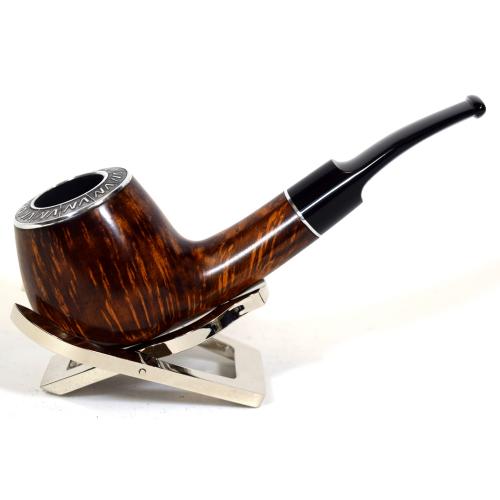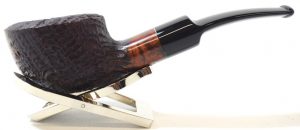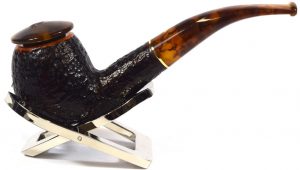Last time I wrote about where to start with pipes and why but not about their finishes! So, does finish matter when it comes to the smoking experience?
The only thing that the finish will be affecting is the briar’s heat dispersion. The bigger the surface is, the more heat dispersion you will have. A pipe with a rustic/sandblast finish will be technically better at handling the heat than one with a smooth finish.
In reality though, the difference is minimal, and it’s more likely that you will not even notice it.
Personally, it boils down to what you like to look at and the tactile sensation. Up until the beginning of the 20th century, all pipes had a smooth finish supposedly. It was all about the briar’s grain. Its Bird’s eyes and flames d
From the early years of the 20th century, the rustic/sandblast finish became popular because of Dunhill himself and his Shell briar finish technique. A sandblast finish will allow the crafter to bring a new depth to the briar’s grain by literally blasting it with abrasive dust such as sand or glass. This technique removes the softwood but preserves the grain and will define the briar’s growth rings. Wax and stains (single and double) are also used to finish the briar.
On the other hand, a rustic finish is not about the grain but the texture. This technique gave the crafters a chance to use any briar that didn’t have any exciting grain pattern. New ridges and edges are created onto the briar’s surface with many different tools. As you can imagine, wax and lacquer are not used that often for this type of finish. Stains are the go-to.
Are shell briar and sandblasted interchangeable? No, not entirely. A shell briar is sandblasted, but not the other way around.
Let me explain!
 Dunhill, back in the nineteen-teens, patented the shell briar technique. Some people say, by mistake, some others say intentionally, but his new method changed how our pipes look.
Dunhill, back in the nineteen-teens, patented the shell briar technique. Some people say, by mistake, some others say intentionally, but his new method changed how our pipes look.
To put it simply, a soft briar (Algerian Briar before the 60s, then a Greek Briar) gets submerged into oil for several weeks. After that, the briar gets exposed to high temperatures for many days. As a result, parts of the grain will harden and stand out, and an oil waterproof coating will be formed. The briar will then go through sandblasting, which will remove the oil coating and reduce the cutting effect. The Algerian briar will get a deep, defined contrast in the grain. In comparison, the Greek briar will have a much softer result because the material is much harder.
This technique allows the crafter to have complete control over the process, preserving all the details of the Bird’s eyes and the flames that you don’t have when you sandblast the briar.
I personally like pipes with a mixed finish. I love to have a smooth section and a textured one close to each other.
What about you? Which one do you like?
Till next time!
Chris
